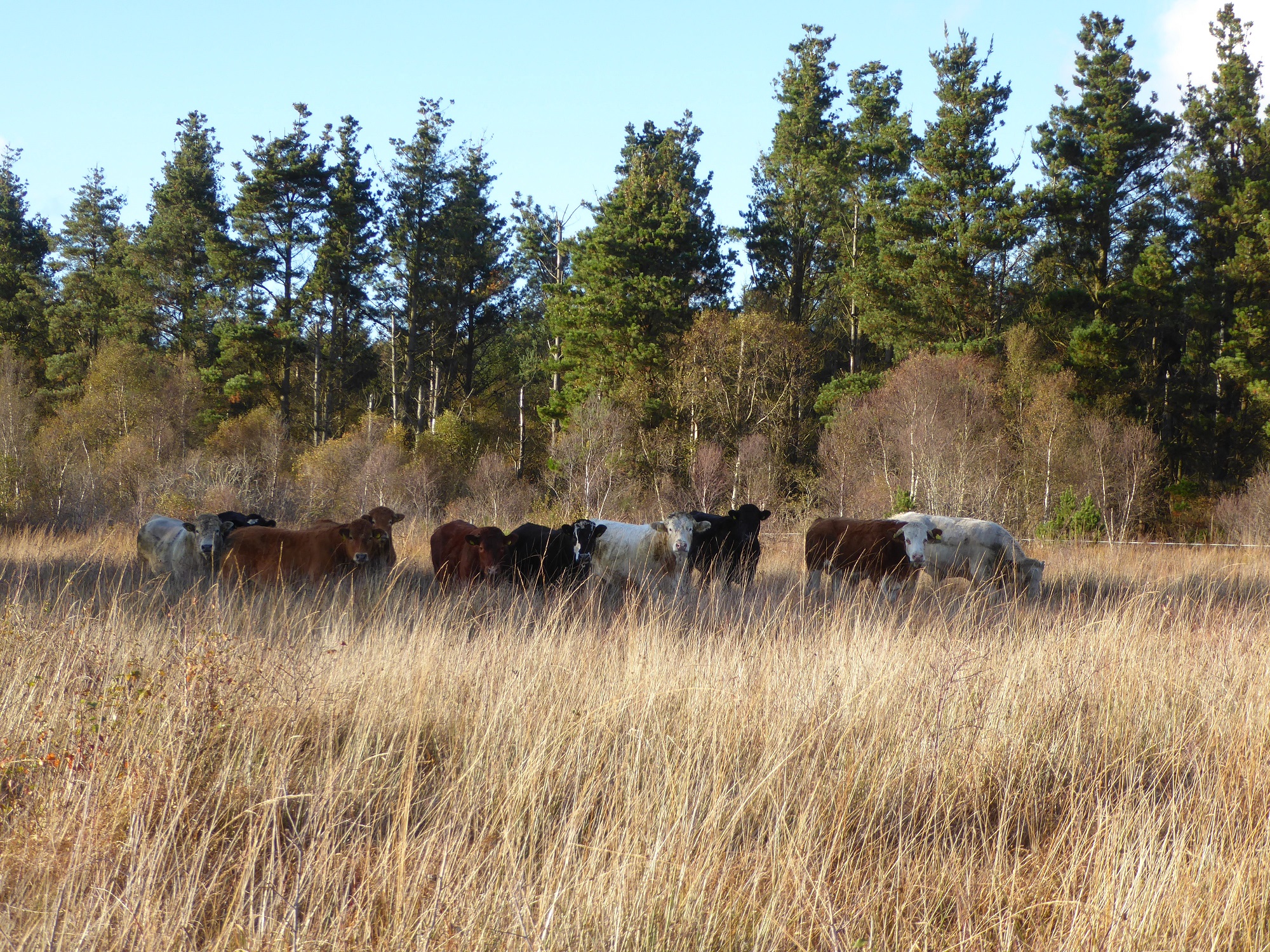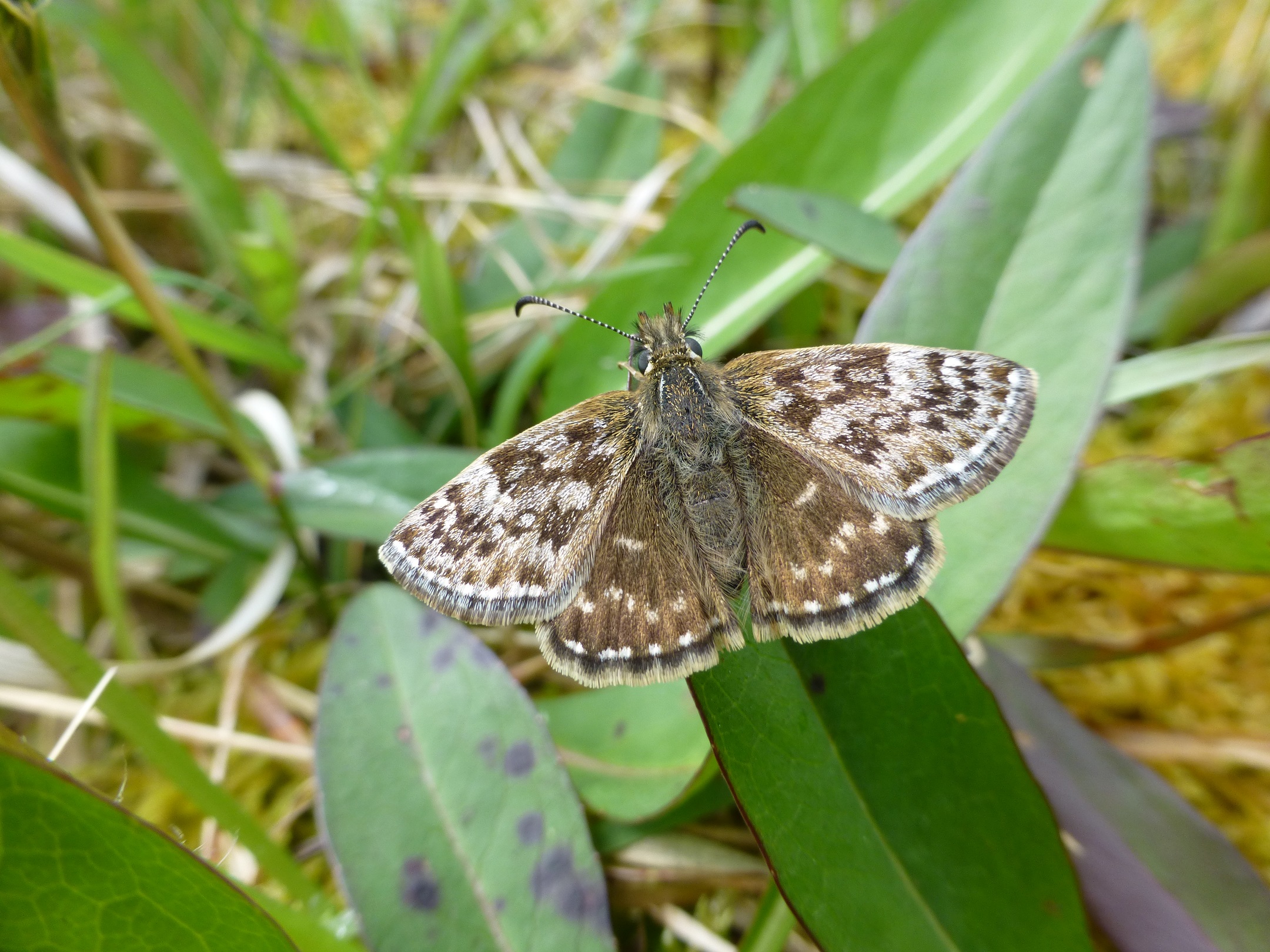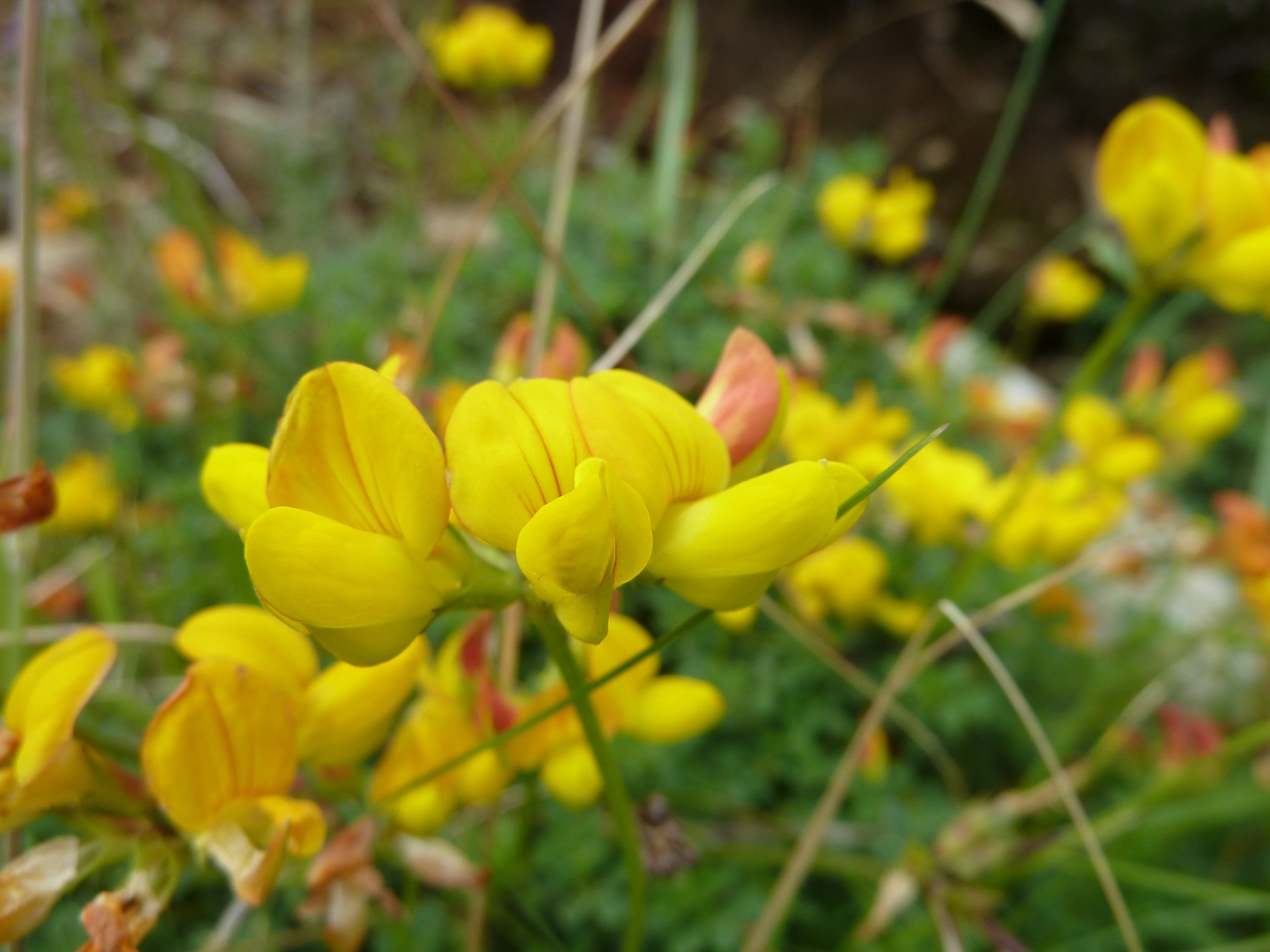The summer of 2018 was warm, dry and created excellent conditions for vegetation growth, especially as the peat soil retained some moisture.
Now it is time to remove the heavy grassland vegetation, reduce the density of the tuft-forming Purple Mor-grass, create soil disturbance to create warm, bare patches for germination of new flowers and provide good basking spots for adult butterflies and warm breeding sites for caterpillars and check the re-growth on coppiced willow. In short, it is time to introduce cattle to enhance the habitats on Lullybeg’s Crabtree Reserve.
The work on preparing the site for grazing took place, happily, in dry sunny conditions on Thursday 1st November. Ten hungry cattle were introduced and these explored the reserve before settling down to a good meal. Cattle are selective feeders, ideal for creating an uneven patchwork of sward heights which is perfect for all of Lullybeg’s grassland moths and butterflies. Removal of dense vegetation keeps soil fertility levels low, allowing the flora, such as the range of orchids present here, to thrive. Without the intervention of livestock or regular disturbance by heavy machinery, dense vegetation dominated by ranker grasses develops, choking less robust plants and cooling the soil and herb layer, making breeding conditions less suitable or even impossible. Just to show how dense grassland vegetation affects one butterfly, let us consider the habitat required by the Dingy Skipper.
This intricately patterned little butterfly (see photo below), rated as near threatened in Ireland lays its eggs on Common Bird’s-foot-trefoil, a low-growing straggling perennial that dies back in autumn and re-sprouts in April. It must be unshaded for the Dingy Skipper to breed on it. The plant must grow in a warm area, usually with some shelter which means it needs to grow among dry dead vegetation or grow close to bare soil or rock that heats up in direct sunlight in order to be suitable for the butterfly. Plants shaded by tall grass or scrub are not used. Cattle grazing will pare back dense grasses and poaching will disturb the soil around the plants making germination of new foodplants possible and ensuring the conditions needed remain suitable. Common Bird’s-foot-trefoil is also used as a nectar source by the Dingy Skipper and by a number of other butterflies but butterflies rarely take nectar from plants in shadow. By grazing the vegetation, the cattle help to create open conditions to assist this lovely flower to thrive, ensuring that butterflies that use the plant for breeding and nectar, including the Common Blue and Cryptic Wood White, and day-flying moths such as the Narrow-bordered Bee Hawkmoth, Burnet Companion and Mother Shipton, will continue to prosper.
We know from post-management monitoring in previous years that the Dingy Skipper breeds in areas containing the foodplant that were cleared of encroaching vegetation the previous winter. The Dingy Skipper, along with many butterflies, are quick to exploit new opportunities. We look forward to next spring to see the fruits of our work!
Our thanks and appreciation go to our supporters and to Philip Doyle and his staff.




